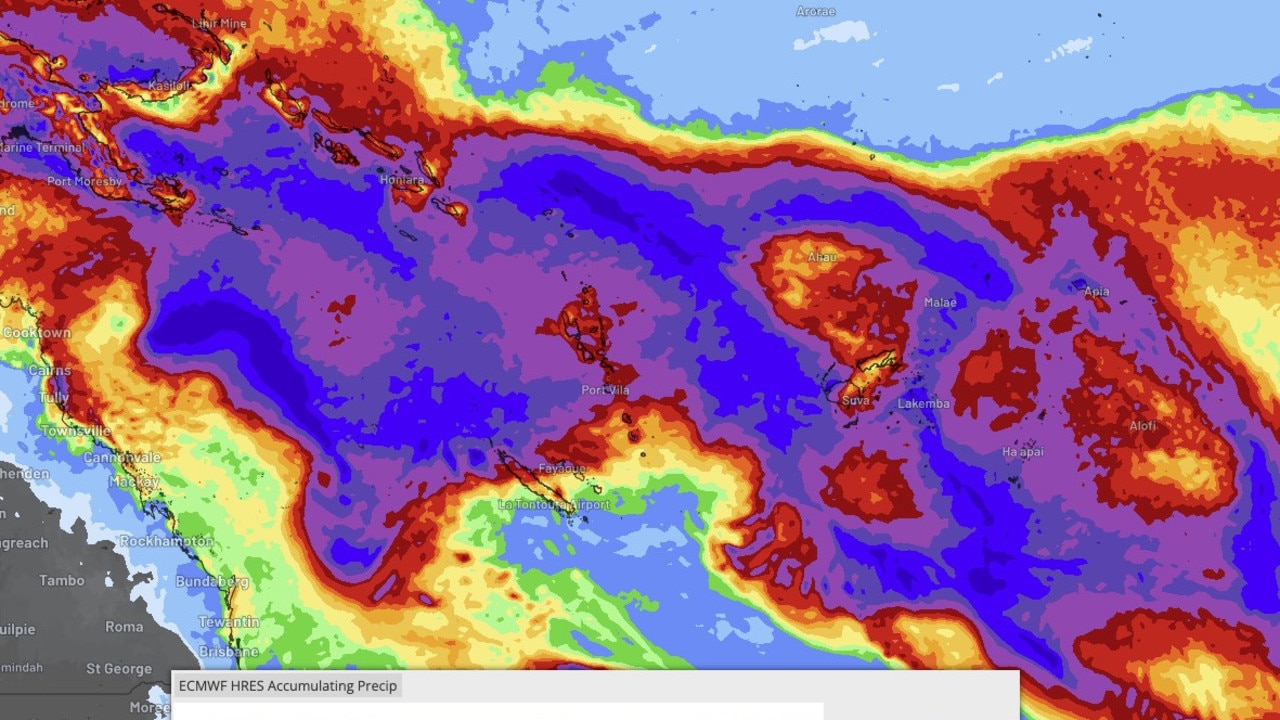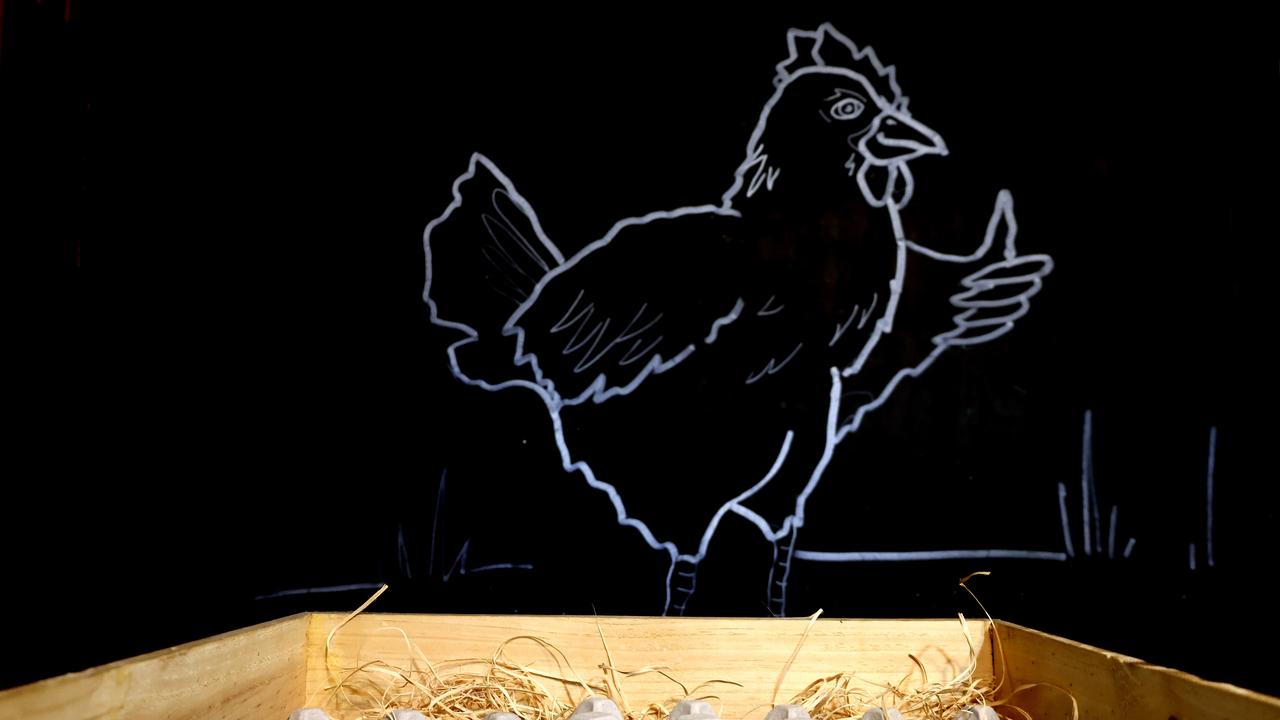Tonga tsunami puts Australia, Pacific nations, Japan, US West Coast on alert
As tsunami waves threaten the east coast after a volcanic eruption triggered global alerts, residents have been told to avoid one behaviour. SEE PHOTOS, VIDEO

A second tsunami in Tonga has flooded homes, forcing people to higher ground after a “violent’ underwater volcanic eruption was heard in neighbouring countries, triggering warnings for Australia, Fiji, New Zealand, Vanuatu, American Samoa, Lord Howe, Macquarie Island, and Norfolk Island.
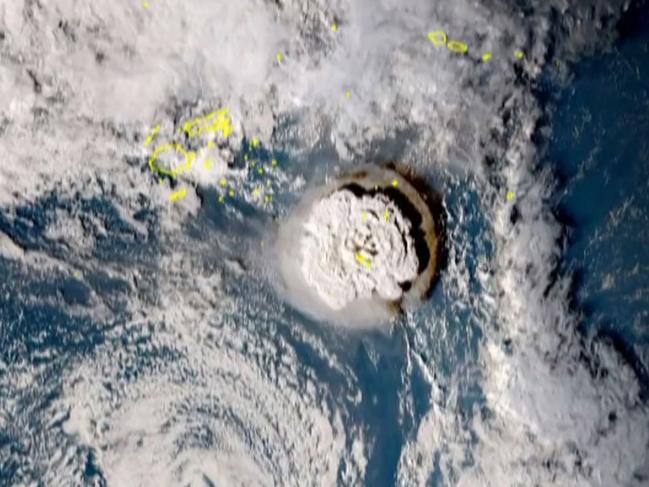
The Bureau of Meteorology has downgraded the threat level for Australia, with marine warnings only in place for NSW, Lord Howe Island and Norfolk Island.
Witnesses in Tonga described how the blast shook the earth for several minutes and sounded like rumbling thunder and video filmed by locals shows high waves crashing into coastal houses.
The Japan Meteorological Agency said the tsunami reached that country’s Pacific coast, too, with waves as high as three metres (11 feet) possible.
A 1.2-metre wave reached the remote southern island of Amami Oshima and other areas along Japan’s Pacific coast observed smaller surges, the agency said.
The West Coast of the United States, from the California-Mexico border in the south to Alaska in the north are still on watch.
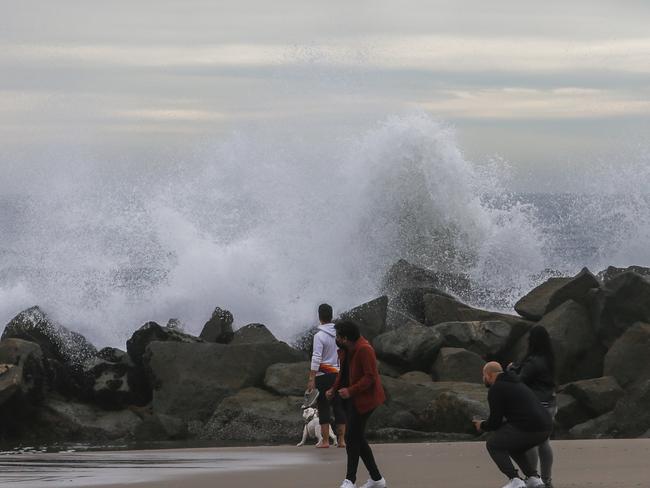
Footage posted on Twitter showed large waves hitting the Californian coast as shocked onlookers walked on.
In Monterey, surfers ignored the warnings to stay away from the beaches despite the dangerous tsunami waves.
Canada issued a tsunami advisory for British Columbia province and urged people to stay away from beaches and marinas.
Surfers 🌊 …do NOT think you are invincible 🤦ðŸ»â€â™‚ï¸ this is just dumb to try and do..
— Bryce Campbell🤷ðŸ»â€â™‚ï¸ (@BCampbell_24) January 15, 2022
Maybe the people in this video just didn’t know about the #Tsunami warning going on but SHEESH 🤯
(ðŸ“Monterey, California )#HungaTongaHungaHaapai#MotherNature#TsunamiWarning#Surf#Surferspic.twitter.com/EQPG6htQsu
East coast Australians have been warned to avoid the beach on Sunday as officials worry over the possible threat of a tsunami wave.
The NSW State Emergency Service told people to not go swimming or drive down to the beach to have a look.
“I know a lot of people will be disappointed and it’s going to be a very humid day, and the Australian way is to get down to the beach,” an SES official told reporters on Sunday morning.
my brother captured the tsunami flowing up the san lorenzo river in santa cruz pic.twitter.com/f0r2VPv6uy
— 🌊Dylan Gasperik🌇 (@DGdoes) January 15, 2022
“But to protect this community, the beaches are closed and surf lifesaving have removed the flags, and we’re making sure that people don’t go into the water.”
The official said a rock fisherman had to be rescued earlier in the day.
Beaches were expected to stay closed at least until about 4pm.
“In past tsunami warnings we’ve had people who get into their vehicles and go down to the beach — that’s exactly the wrong thing to do,” the SES official said.
“We need to have the roads as clear as possible … once that wave comes, if it does come, it’s very vital and very urgent to get people away from those areas.”
Sky News meteorologist Rob Sharpe said the volcanic eruption was causing “dangerous coastal conditions” throughout parts of the eastern seaboard.
“There is a threat that we could see more (tsunamis) as further volcanic eruptions take place in Tonga,” he said.
“Being out in the water is dangerous because we can have dangerous currents and rips forming.
“They’re (tsunamis) quite different to typical waves; there’s a lot more water behind each individual tsunami than there is behind a typical wave that hits our beaches so they’re a lot more powerful and they can cause problems for you if you’re out in the water.”
Sydney police and the NSW State Emergency Service evacuated and closed Bondi Beach, in eastern Sydney late on Saturday.
Bondi Beach was briefly reopened on Sunday, but the flags were soon taken down with everyone discouraged from entering the beach.
The Bureau of Meteorology issued a marine warning for Queensland from Sandy Cape to Point Danger. The warning has now been cancelled. Small unusual tsunami waves may continue, the Bureau said, but are no longer expected to be dangerous.
In Victoria, there was a marine warning from Lakes Entrance to 60nm east of Gabo Island, which was cancelled on Sunday afternoon.
Marine warnings were also cancelled for Macquarie Island and Tasmania.
The NSW State Emergency Service has ordered the evacuation of low-lying parts of Lord Howe Island with people advised to move to evacuation assembly areas.
Evacuation Order Issued for #LordHoweIsland. Land Threat for #NorfolkIsland. Marine Threat for #NSW, #QLD, #TAS, #VIC, #MacquarieIsland. #Tsunami Warning after volcanic eruption near TONGA ISLANDS. Latest info here: https://t.co/Tynv3ZQpEq. pic.twitter.com/wliDqjgYbB
— Bureau of Meteorology, Australia (@BOM_au) January 15, 2022
On Norfolk Island, there is a threat of major land inundation, flooding, dangerous rips, waves, and strong ocean currents.
People in affected land threat areas are strongly advised by Norfolk Island Police to go to higher ground or move inland.
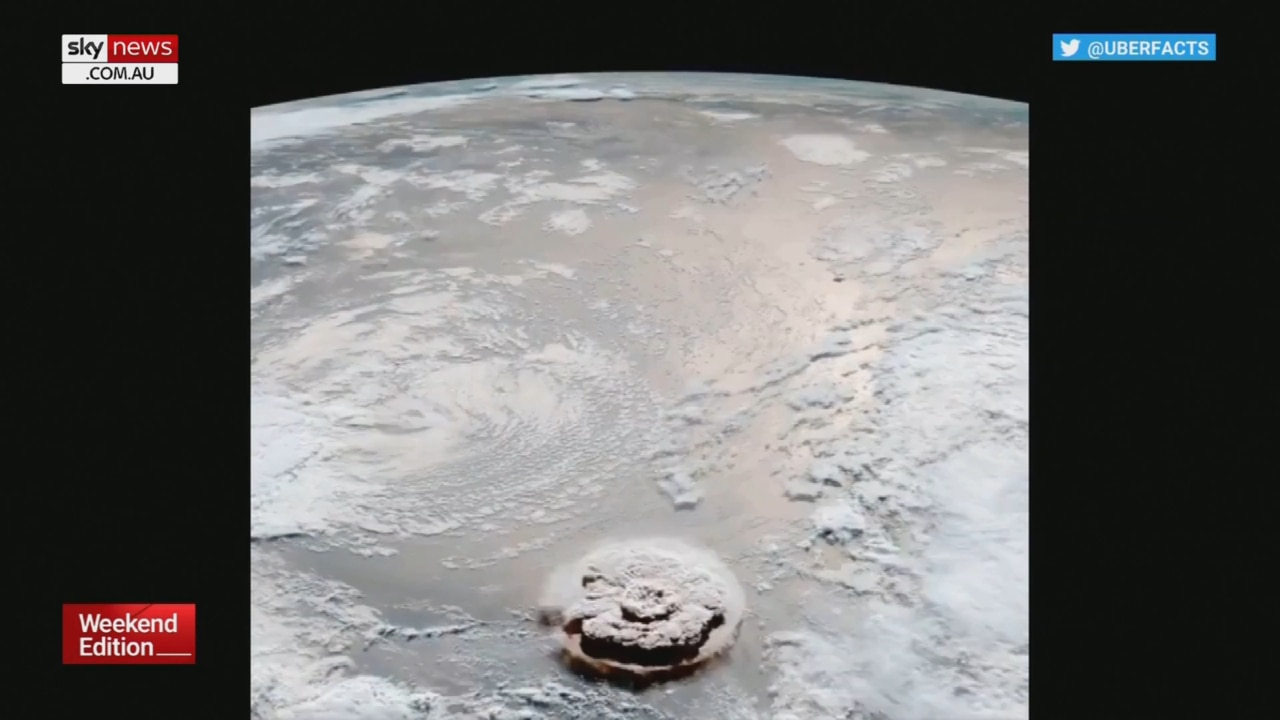
The Australian government is working to determine the extent of the damage in Tonga and any subsequent aid that will be offered.
DFAT shared a tweet from Foreign Minister Marise Payne who said her thoughts are with the people of Tonga.
“Australia stands ready to provide support to our Pacific family,” she said.
Prime Minister Scott Morrison is also monitoring the situation and Australia is on standby to offer support.
“Tonga is part of our Pacific family and our thoughts are with the entire community dealing with the impact of the volcanic eruption and tsunami,” a spokesperson said.
“Initial assessments are still underway and DFAT is working to ensure Australians in Tonga are safe and accounted for. Any Australians concerned about people in Tonga should contact DFAT on 1300 555 135 or +61 2 6261 3305.”
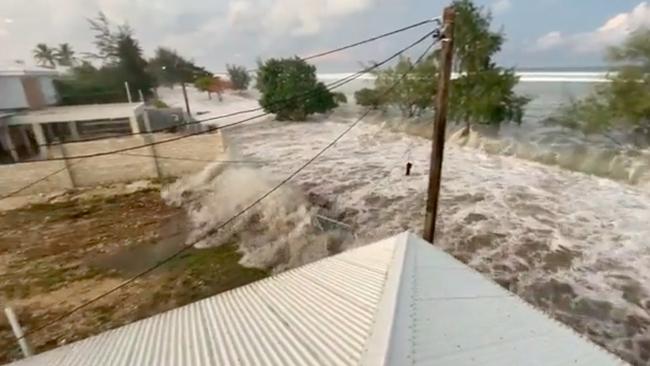
Large waves crashed ashore in Tonga, after its Meteorological Service issued the warning for the Pacific island nation on Saturday afternoon, as locals posted video footage of water rolling through local neighbourhoods.
The maximum tsunami wave recorded following Friday’s first volcanic explosion was 30 centimetres, and cut power and communication networks off, leaving authorities to communicate through radio.
The latest eruption of the Hunga Tonga-Hunga Ha’apai volcano came just a few hours after Friday’s tsunami warning was lifted.
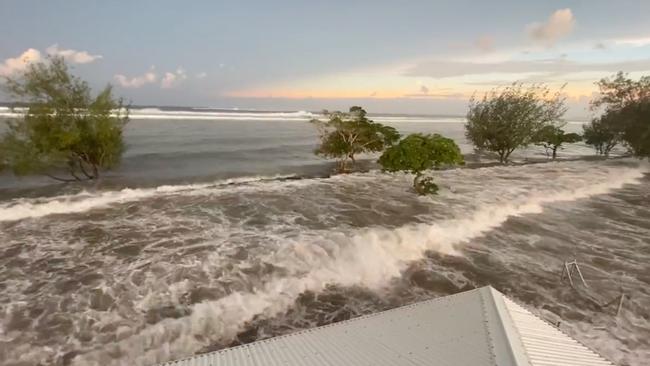
Stay safe everyone 🇹🇴 pic.twitter.com/OhrrxJmXAW
— Dr Faka’iloatonga Taumoefolau (@sakakimoana) January 15, 2022
Absolutely stunning satellite imagery of the #Tonga eruption a short time ago. #NewZealand's North Island at the bottom left. pic.twitter.com/FCioKkbvJU
— WeatherWatch.co.nz (@WeatherWatchNZ) January 15, 2022
Visible satellite imagery - close up over #Tonga. Absolutely enormous #eruption. pic.twitter.com/R6oVgtzTgg
— WeatherWatch.co.nz (@WeatherWatchNZ) January 15, 2022
Infrared Satellite Imagery shows how clear skies were fast replaced by the giant #eruption cloud over #Tonga in the past couple hours. pic.twitter.com/pxqA4LymlH
— WeatherWatch.co.nz (@WeatherWatchNZ) January 15, 2022
The 1.2 metre waves sent people driving away from the shore, and lasted at least eight minutes. It sent plumes of gas, ash and smoke several kilometres into the air.
Tonga’s King Tupou VI was reported to have been evacuated from the Royal Palace in Nuku’alofa and taken by a police convoy to a villa well away from the coastline.
New Zealand’s National Emergency Management Agency also issued a tsunami activity warning, saying: “We expect New Zealand coastal areas on the north and east coast of the North Island and the Chatham Islands to experience strong and unusual currents and unpredictable surges at the shore.”
NEMA said that people in or near the sea should move out of the water, off beaches and shore areas and away from harbours, rivers and estuaries until at least 4am on Sunday.
“Strong currents and surges can injure and drown people,” NEMA said.
“There is a danger to swimmers, surfers, people fishing, small boats and anyone in or near the water close to shore.”
NEMA has said there is no need to evacuate other areas unless directly advised by local civil defence authorities.
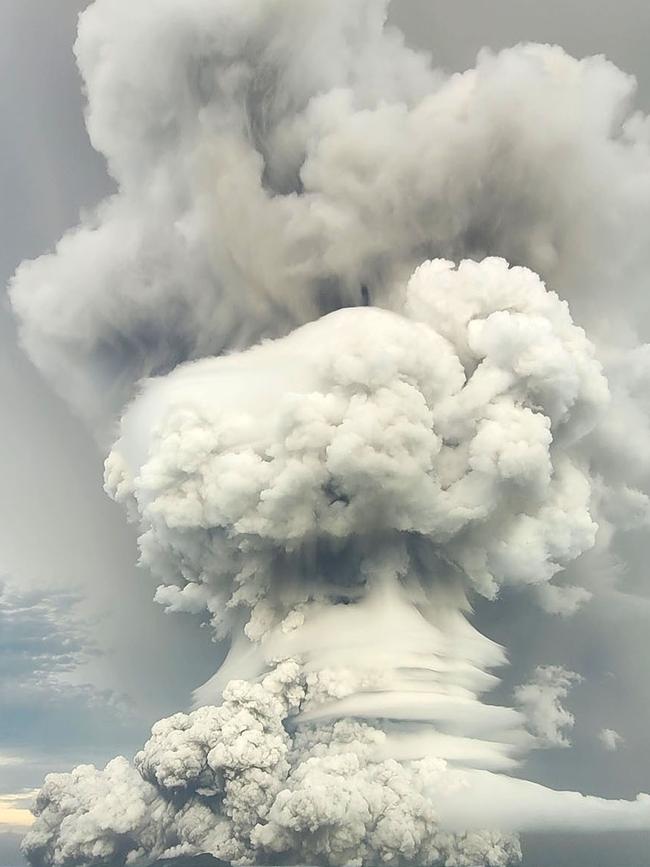
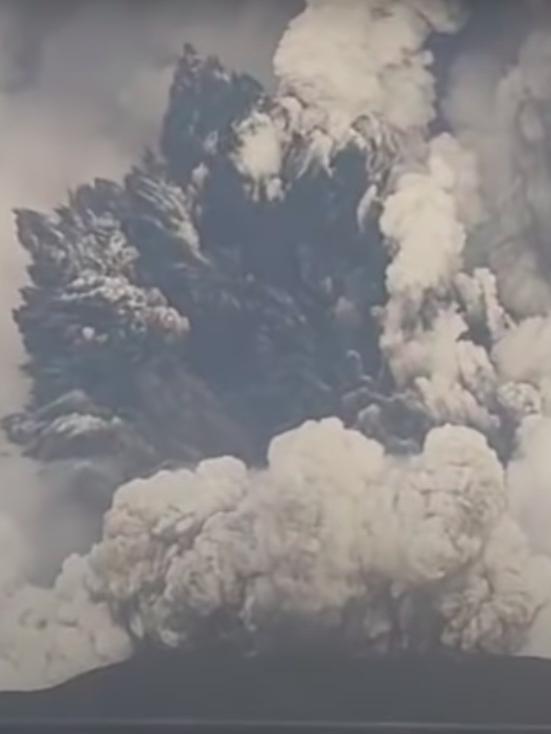
The US Pacific Tsunami Warning Centre issued a warning for American Samoa which was later cancelled, as was the alert for Hawaii.
The eruption was so intense it was heard as “loud thunder sounds” in Fiji more than 800 kilometres away, officials in Suva said.
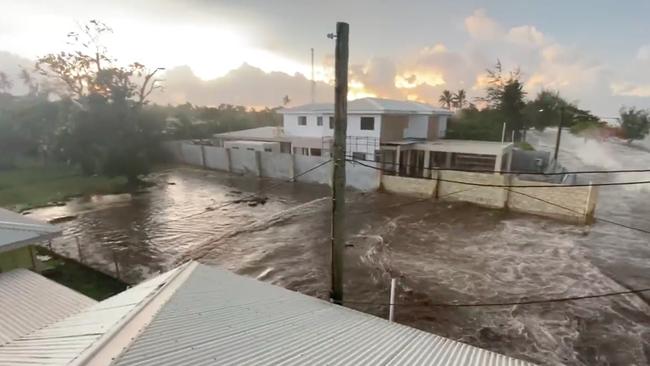
A Tsunami alert is now in effect for the Fiji group. pic.twitter.com/B5eQeckKjl
— Jese Tuisinu (@JTuisinu) January 15, 2022
Tongan Mere Taufa told Stuff.co in New Zealand she was at home with her family when the eruption began.
“It was massive, the ground shook, our house was shaking. It came in waves, my younger brother thought bombs were exploding nearby,” she said.
“My first instinct was to take cover under the table, I grabbed my little sister, and screamed at my parents and others in the house to do the same.”
Then water filled their home.
“We just knew straight away it was a tsunami. Just water gushing into our home,” she said.
“You could just hear screams everywhere, people screaming for safety, for everyone to get to higher ground.”
Victorina Kioa of the Tonga Public Service Commission said Friday that people should “keep away from areas of warning which are low-lying coastal areas, reefs and beaches.”
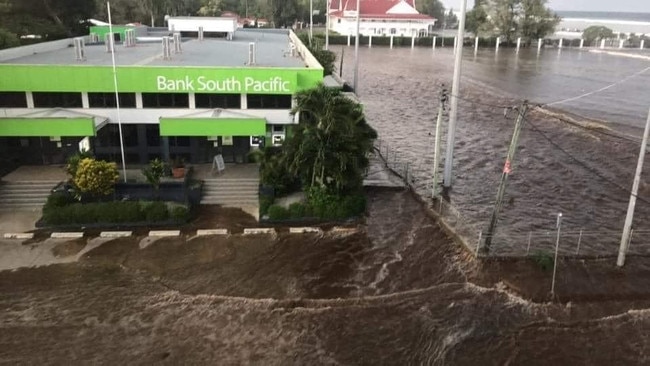
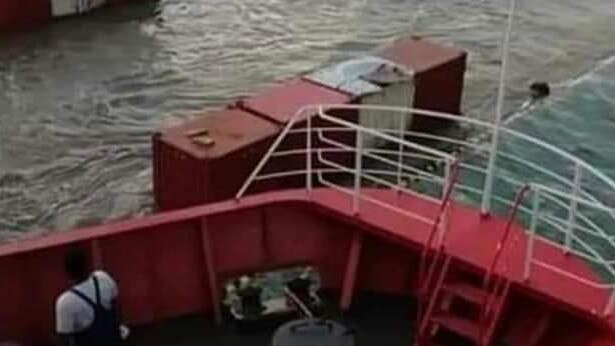
The head of Tonga Geological Services Taaniela Kula urged people to stay indoors, wear a mask if they were outside and cover rainwater reservoirs and rainwater harvesting systems.
The waves came after the Hunga-Tonga-Hunga-Ha’apai volcano erupted again on Friday, sending ash, steam and gas 20 kilometres into the air.
BREAKING: Satellite image captures Tonga's Hunga volcano erupting
— The Spectator Index (@spectatorindex) January 15, 2022
(Source: @US_Stormwatch) pic.twitter.com/VolrJs7Gfi
Project Co-ordinator for the Tonga parliament Buildings Project, Dr Faka’iloatonga Taumoefolau, posted footage of the waves on Twitter and also showed pictures inside a car from where sulfuric acid rain could be seen falling.
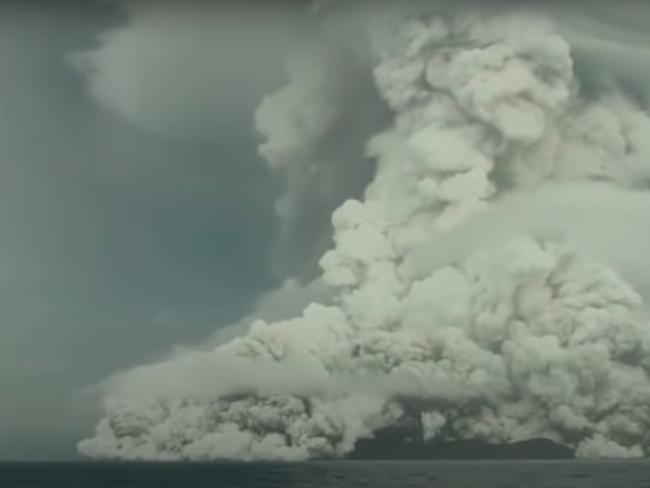
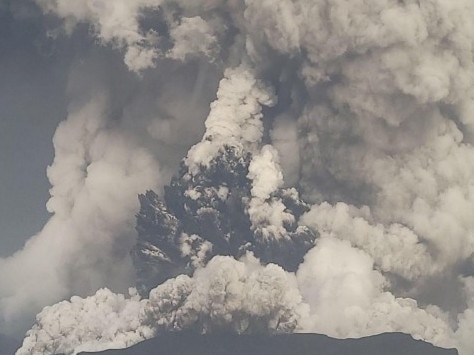
He captioned his picture by saying: “Raining ash and tiny pebbles, darkness blanketing the sky”.
Radio New Zealand reported that sirens had rung out across Nukualofa and police asked people to move to higher ground.
Other unverified footage is circulating on social media, showing cars driving away from waves hitting homes and the shoreline.
ðŸ˜ðŸ’”💔 pic.twitter.com/LksxRW3Lvf
— Aki🌴🇹🇴 (@ahkee_fifita) January 15, 2022
The volcano is about 30 kilometres southeast of Fonuafo’ou island in Tonga.
Tonga Geological Services head Taaniela Kula said the volcanic eruption had a radius of 260km, which was about seven times more powerful than the last eruption on December 20 last year.
Originally published as Tonga tsunami puts Australia, Pacific nations, Japan, US West Coast on alert

